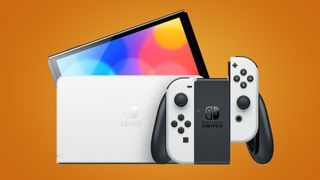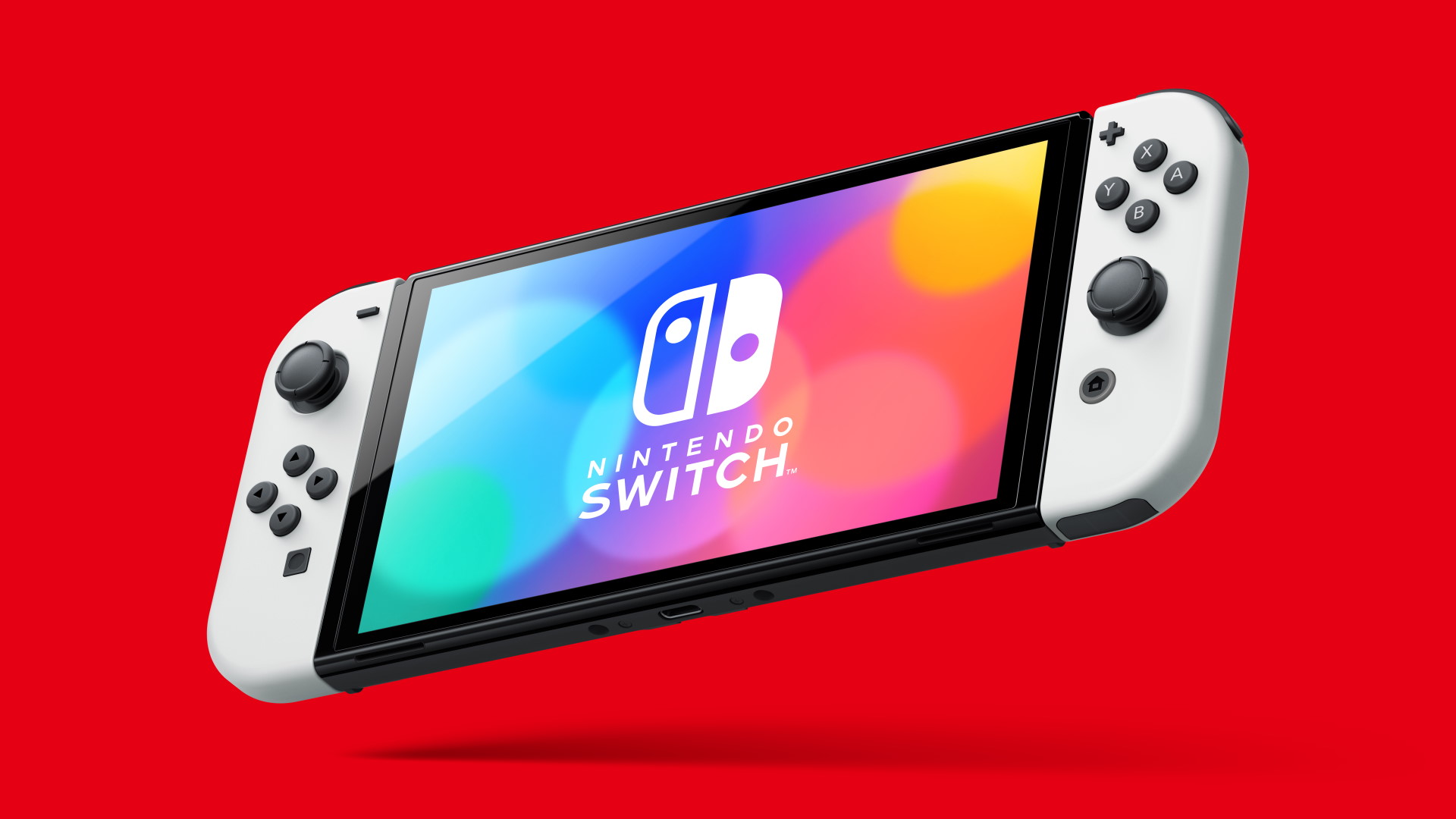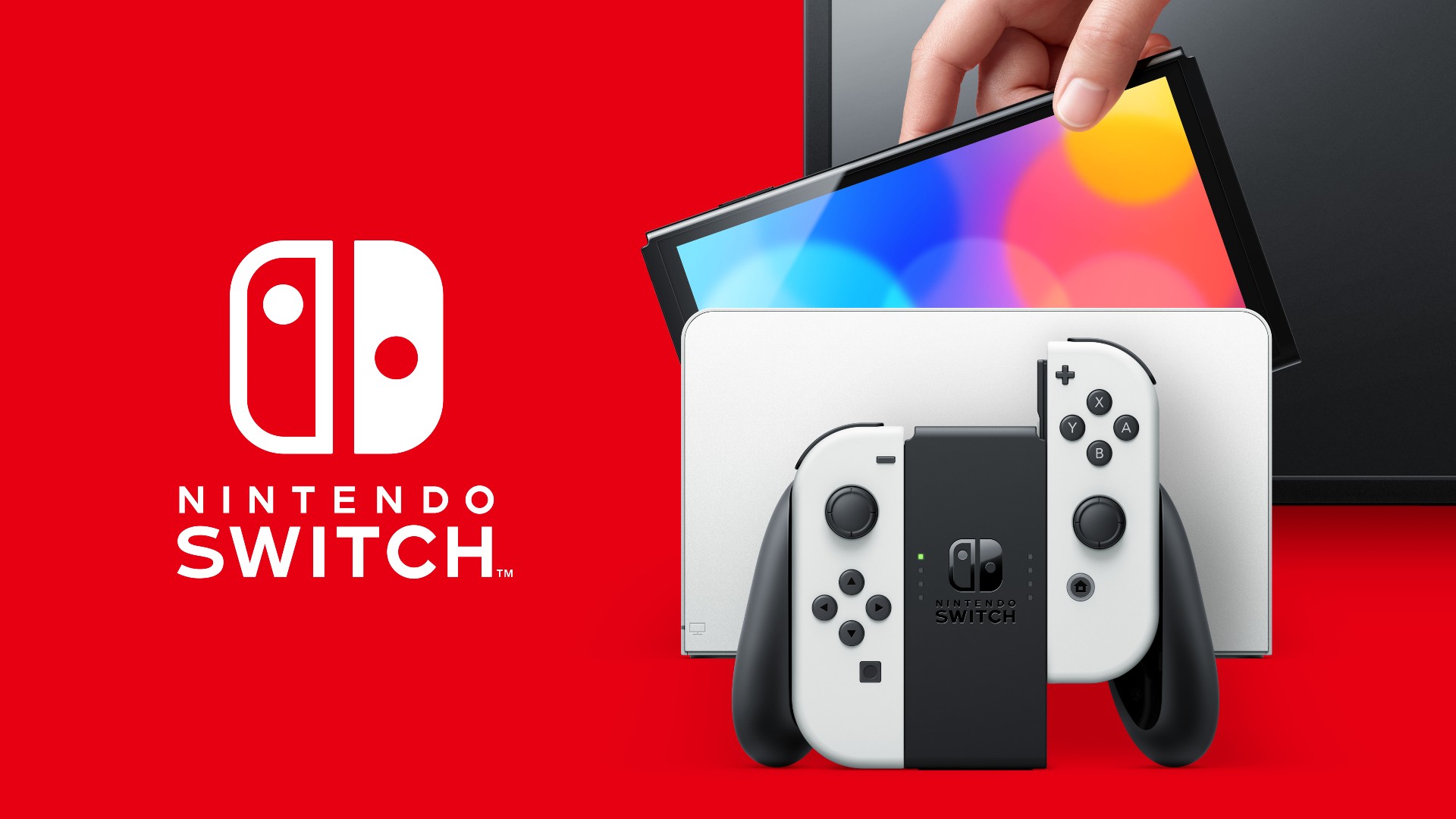Nintendo Switch OLED has some decent upgrades, but lacks the bigger picture in a next-gen world - jacksonhury1958
Nintendo Switch OLED has several comely upgrades, but lacks the bigger picture in a next-gen creation

Nintendo Switch OLED is an updated Switch console coming this October, with the term "updated" being used instead generously. The Swop OLED comes helmeted with a bigger screen, a wider kickstand, improved speakers, and a black and white colorway, on with a new sorrel that includes a built-in wired Local area network port – but it's no Nintendo Switch Pro. While rumors shouldn't negatively touch the product that ultimately makes it to market, it's firm to sympathize the logic behind what is essentially a mid-rhythm upgrade.
Compare the Nintendo Switching OLED to other middle-generation refreshes like the PS4 Pro and Xbox One X and you'll see an unmistakable deficiency in actual upgrades. Nintendo has endowed in hardware refreshes for its own systems in the past, although the New Nintendo 3DS was undoubtedly a larger leap over the 3DS than what we're seeing here between the Switch and Switch OLED. Possibly it's nobelium surprise that some are disappointed with the announcement, then – and that's earlier we flatbottomed get into the rumored features that never became a realness.
Expectation vs Reality

The Nintendo Switch OLED will release on October 8 for $349/£309. Expect stock to go fast, and then if the new model entices you, get your Nintendo Switch OLED pre-order sorted.
Nintendo never inveterate nor denied the existence surgery development of a Nintendo Switch Pro, but that didn't stop the steady circulation of rumors. In early 2019, the Wall St. Journal reported that two new Nintendo Throw models were happening their mode: a "cheaper option for occasional gamers" (which ended up being the Substitution Lite), and a more powerful, full-HD Swap model for the hardcore Nintendo fans.
Then, in Honourable 2020, Bloomberg reportable on a rumor that Nintendo was functional on a 4K HD Switch with more than computation power. The general consensus was that the Nintendo Switching In favor of would come equipped with an upgraded dock that would allow for 4K gaming on your Television set, increased battery life for the console in handheld mode, and a larger complete 1080p display. So, just a few months past, Blo o mberg reported that we would see a 4K Nintendo Switch with a 7-inch OLED screen sometime before the yr was skyward. Well, the reports were partially true – we are acquiring a larger, 7-inch OLED block out – but that's nigh it.
You can't blame Nintendo for the Shift OLED non living up to the expectations generated away the hearsay mill, simply that doesn't free the company entirely. Information technology's been little over four years since the Replacement made its debut and the need for a number of quality-of-life-time improvements to the system has only grown in that sentence. Players consume spent years asking for better Gladden-Cons that won't suffer the fearful tramp (which is stock-still something many encounter to this day). An upgraded processor and multiplied RAM would take over helped boost the speed of the Swap, and improve stableness in the games that are beginning to stress the system of rules. A longer bombardment life would have made handheld play more viable, particularly as more needy games make a hurried snack out of the current simulate.
These are the types of problems that hardware refreshes are designed to work out. Why Nintendo opted for minimal revisions to the Switch Organic light-emitting diode remains to be seen, but information technology does verisimilar think of that we'll be waiting out the cabinet's cycle to see what The Legend of Zelda's Hyrule looks like in 4K. Freshly, Nintendo chairman Doug Bowser stated that the Nintendo Electric switch was "redefining what a cabinet biography cycle fanny look like, and the plangency of that gross life cycle with a strong cadence of content." The Nintendo Switch Organic light-emitting diode seems to be an attempt at a mid-cycle console update, but it's a weird one when you compare it to interchangeable moves by PlayStation and Microsoft – and even Nintendo's hardware from over a decade ago.
Middle-cycle Minutiae

intendo Flip sits straddled between two contrasting Sony and Microsoft soothe cycles: the Xbox One into Xbox Series X and the PS4 into PS5. With the middle-cycle solace refresh precedent rig by other industry titans (and Nintendo itself) it's intractable to avoid direct comparisons between the Nintendo Switch OLED and previous mid-cycle updates of both Xbox and PlayStation consoles. Those comparisons only make the Switch OLED look back worse, unluckily.
The Xbox One X debuted in November 2017 and retailed for $499, the assonant price as the original Xbox One. The mid-cycle cabinet doubles the storage from 500GB to 1TB, increases the processing power and RAM, and offers 4K HDR gaming. The PS4 Pro was released in November 2016 and cost $399, the same monetary value as the original PS4. PlayStation's interpretation of the mid-cycle console is very like to its competitor: it doubles the storage, increases the processing power, and provides the highly sought-after later 4K gaming experience.
Compare that to the Nintendo Exchange OLED, which doubles the internal computer storage from 32GB to 64GB and offers a larger screen. The processing ability remains exactly the same arsenic the original Switch, so don't expect games to run any faster on the OLED, and there's no increase to battery life. And most confusingly, the Nintendo Transposition OLED has 720p resolution in handheld and 1080p when docked – which is the exact same As the original Nintendo Switch. With the adoption rates of 4K televisions entirely rising, the lack of musical accompaniment for better resolutions feels like a lost chance to future-proof the soothe – particularly as so many third-political party publishers are prioritising higher faithfulness experiences for PC and another home consoles.
The Switch OLED seems weirder when you await at Nintendo's hardware history: the Nintendo DS was released for $149 in 2005, then a yr and a half later came the Bureau of Diplomatic Security Lite for a bit cheaper. The ScD Lite was slimmer and more jackanapes, with a longer battery life and adjustable brightness settings. Then came the Nintendo DSi and DSi XL, which offered an even bigger block out for just $40 more (and internet connector). Almost all new iteration of the Element 110 ready-made sense, offering changes that warranted purchasing a young console. The Nintendo 3DS soothe propagation followed a similar trajectory, with its console table revisions offering noticeable improvements like bigger screens, amend processing power, and a new suite of buttons, thumbsticks, and triggers. Compare the two previous generations to the Nintendo Transposition OLED and it's no wonder many of us are impression underwhelmed.
While the rampant rumor hype can comprise blamed in part for the dashing hopes that comes with a lack of 4K gaming, the rumors aren't the reason why the Nintendo Switch OLED feels like a rum console. Four years afterward the put out of the Switch, Nintendo is just giving United States of America a console with a slightly larger screen in a different colorway - and that doesn't feel like plenty in today's hyper-competitive console race.
An analyst claims a Nintendo Switch 4K worthy may still equal in the works .
Source: https://www.gamesradar.com/nintendo-switch-oled-has-some-decent-upgrades-but-lacks-the-bigger-picture-in-a-next-gen-world/
Posted by: jacksonhury1958.blogspot.com



0 Response to "Nintendo Switch OLED has some decent upgrades, but lacks the bigger picture in a next-gen world - jacksonhury1958"
Post a Comment